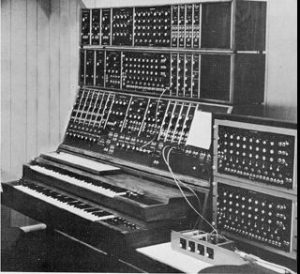The most obvious difference between Moog’s synthesizer and synthesizers that came before it is perhaps the size, as other would often take up an entire room. Moog’s ability to design a modular synthesizer that could easily fit in a studio is attributed to “the availability of cheap transistors in the 1960s” (Pinch and Trocco 12). Besides the size, the modularity of Moog’s synthesizer helped to make it more accessible, as it could be attached to another separate unit like an amplifier or filter. This modularity is what linked the keyboard to the Moog permanently. Moog originally added the keyboard as an optional attachment to make the synthesizer easier to play for musicians. Now, the keyboard is considered an intrinsic part of the Moog synthesizer, cementing its position as a viable instrument for pop and classical artists alike (Pinch and Trocco 20). With or without a keyboard Moog’s synthesizer is voltage controlled, a novel concept at the time, meaning that the musician could more easily control the range of pitches, resulting in different sounds under the musician’s control.
An early Moog synthesizer, circa 1970
Unfortunately, with all of these relatively new technological aspects, the first Moog synthesizers sold for around $10,000 each in 1967, the year he first used the word “synthesizer” (Pinch and Trocco 15). Therefore, Moog mainly received orders for his synthesizers from the wealthy and electronic music composers, usually employed by a large studio or an academic institution. Because of the cost and the novelty of the technology, the Moog was not frequently played as a part of a live performance, as it took too much time between songs to set up and change the patches between units. However, with the modularity of his synthesizer, Moog was able to cater to the preferences of the musicians with whom he worked, which led him to find what worked best for music production in general. With more feedback from his clients and fine tuning, Moog developed the synthesizer further into models that we recognize today. Models like the Mini Moog became more standardized, with less patching and more focus on the keyboard as the mode of creating a sound through the synthesizer.

